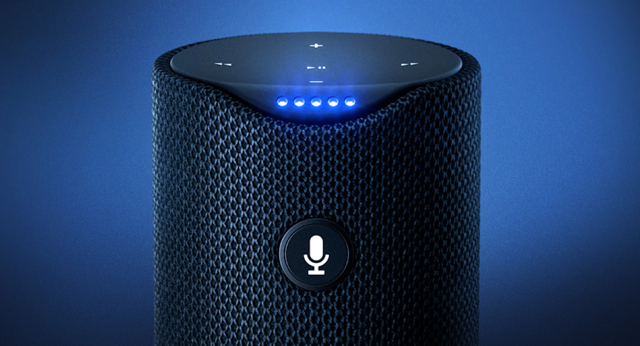Sonos-Amazon Partnership Highlights Need for Improved Mics
September 1, 2016
Since Amazon debuted Echo in 2014, digital tinkerers have been creating hacks to connect Amazon’s speakers to Sonos’ better speakers. Now, Sonos has introduced a system, developed with Amazon, to let users do just that. With a limited beta test version available this year, the system will be released widely in 2017. This partnership highlights a larger problem in audio technology: digital assistants from Apple, Amazon, Google and Microsoft are being held back by limitations in microphone technology.
Bloomberg explains how the partnership between the two companies marks a seachange for the 14-year old Sonos, which “proudly introduced new products at a glacial pace and maintained the tightest possible control over the software its listeners use to control their speakers.”
When Amazon first began selling Echo, Sonos executives “didn’t see it as a threat.” “Sonos doubted a device with such inferior sound quality would tempt their core users,” notes Bloomberg. A disappointing holiday season combined with the realization that many Sonos customers loved the Echo convinced the company to reach out to Amazon.
When its own engineers said that “it wasn’t feasible to add voice control directly to its own hardware any time soon,” Sonos then “aggressively pursu[ed] discussions with Amazon.” Now, in addition to Amazon, Sonos will “let customers of Spotify … and home-automation makers including Lutron, Crestron, and Control4” use their apps to control Sonos speakers.
Shortcomings in audio, as exemplified by audiophiles’ desire to connect Echo to Sonos speakers, underlies a more pervasive issue among digital assistants: what Bloomberg calls “the sad state of mics.” Today’s microphones “still aren’t great at focusing on faraway voices or filtering out background noise, and they often require too much power to be listening at all times.”
That’s sparked what SAR Insight & Consulting analyst Peter Cooney calls “an arms race” for the $1 billion global market for MEMS microphones. MEMS (microelectromechanical systems) are the sensors powering much of the Internet of Things.
IHS Markit analyst Marwan Boustany notes that, since the iPhone 5’s launch in 2012, “microphone performance has not really improved that much.” Better microphones have to be able to do two things without getting bigger or less reliable: “a higher signal-to-noise ratio, meaning the mic can isolate voices more clearly and from farther away, and a higher acoustic overload point, the threshold at which the mic can no longer distinguish signal from noise.”
Mics are more important as new devices incorporate more of them: Echo has seven and the iPhone 6S has four.
Industry leader Knowles, “which shipped about 1.4 billion MEMS mics last year,” is now building audio-processing software into its mic chips. Vesper is “experimenting with entirely new designs,” using piezoelectric technology. But, says Boustany, “the next major step is not until a new technology comes along.”


No Comments Yet
You can be the first to comment!
Sorry, comments for this entry are closed at this time.